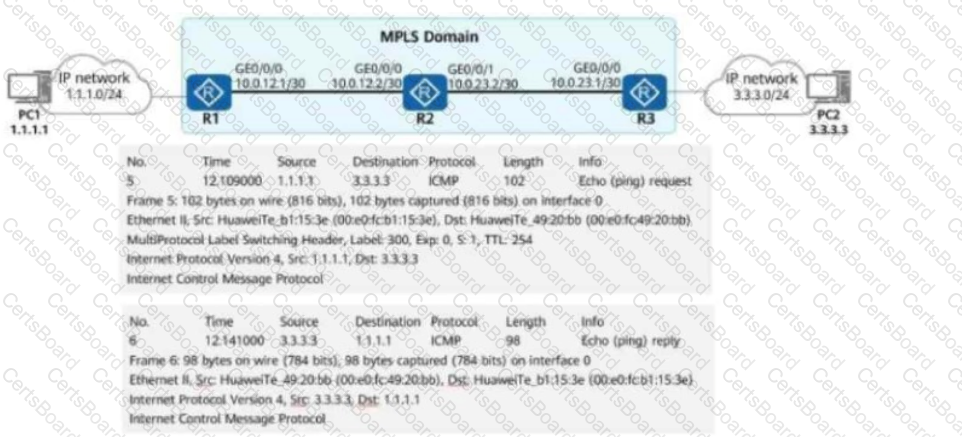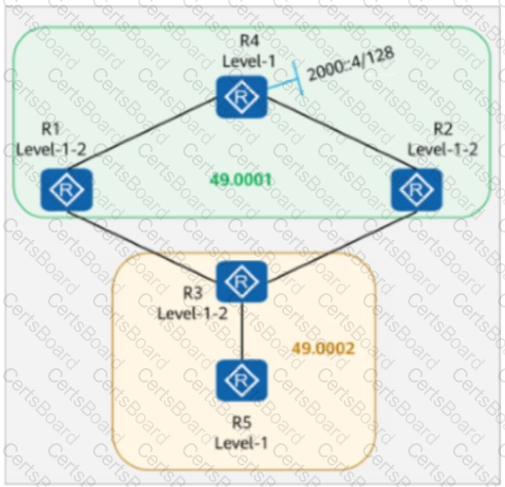In the figure, a network administrator configures a static LSP to implement MPLS data forwarding. The lower part of the topology shows the packet header information obtained from a device.
Which of the following statements are true?

Options:
A network engineer provides a troubleshooting report after rectifying a fault. The actual network is simplified into the one shown in the figure, where R1 and R2 both have OSPF enabled and function as the gateways of PC1 and PC2, respectively.
Given this, which of the following statements are true?

Network Topology:
R1:
Interface GE0/0/0: 10.0.12.1/24 (Connected to R2)
Interface GE0/0/1: 192.168.1.1/24 (Gateway for PC1)
R2:
Interface GE0/0/0: 10.0.12.2/24 (Connected to R1)
Interface GE0/0/1: 192.168.1.2/24 (Gateway for PC2)
Options:
On the IS-IS IPv6 network shown in the figure, multi-topology is enabled on all routers. The IPv6 address of Loopback0 on R4 is 2000::/128. The IPv6 summary 2000::/64 level-1-2 command is configured in the IS-IS processes of R2 and R1. Which of the following statements is false?

On the IS-IS IPv6 network shown in the figure, after the network becomes stable:
R1 can ping 2000:12::0, and
The display ipv6 neighbors command can be used to display the MAC address corresponding to 2000:12::0.

Is this statement TRUE or FALSE?
On the OSPF network shown in the figure:
Area 1 is a common area.
Area 2 is a totally NSSA (Not-So-Stubby Area).
Area 3 is an NSSA.
R5 imports the external route 10.0.5.5/32 into OSPF.
Which of the following routers have the route 10.0.5.5/32 in their routing tables?



